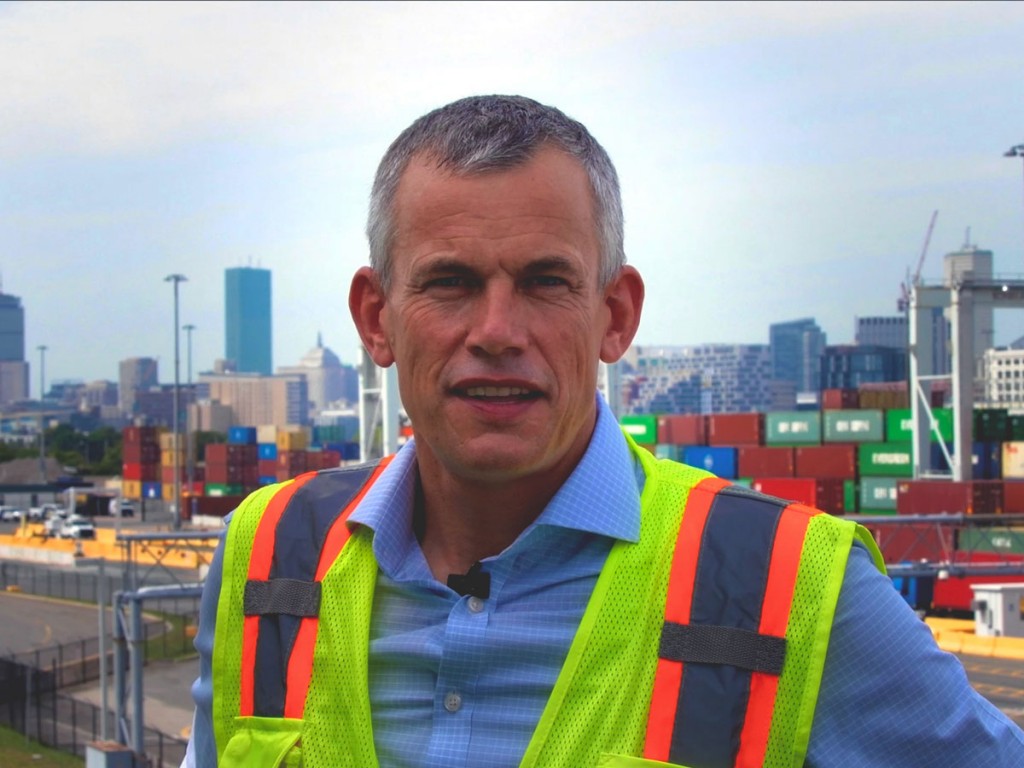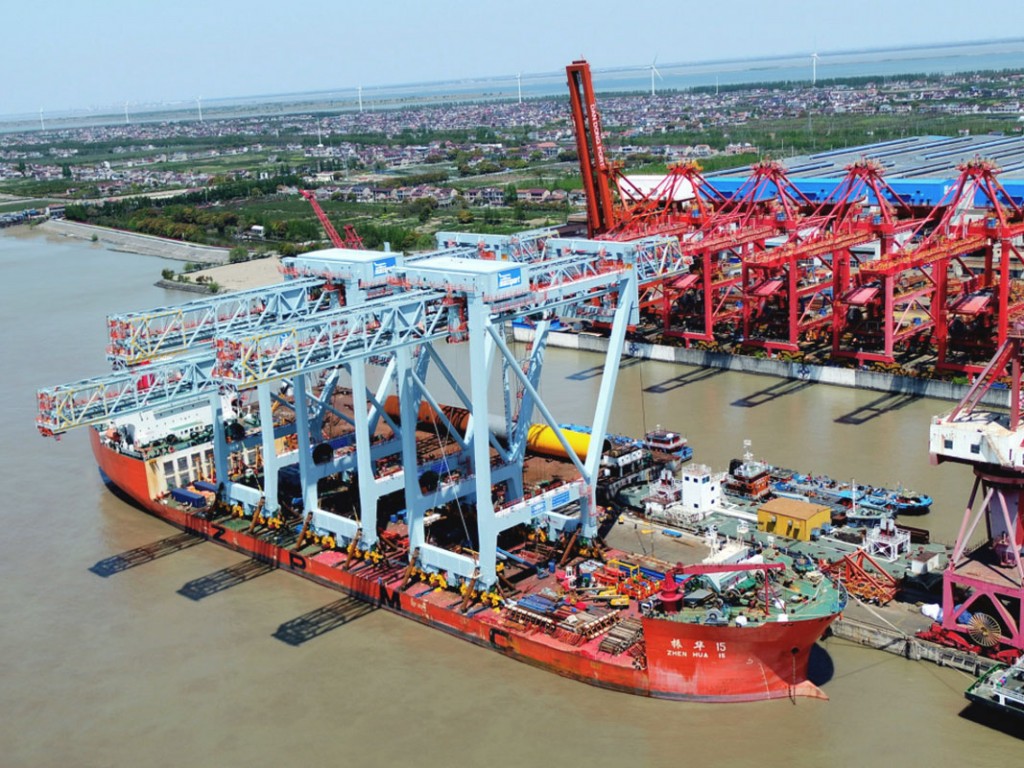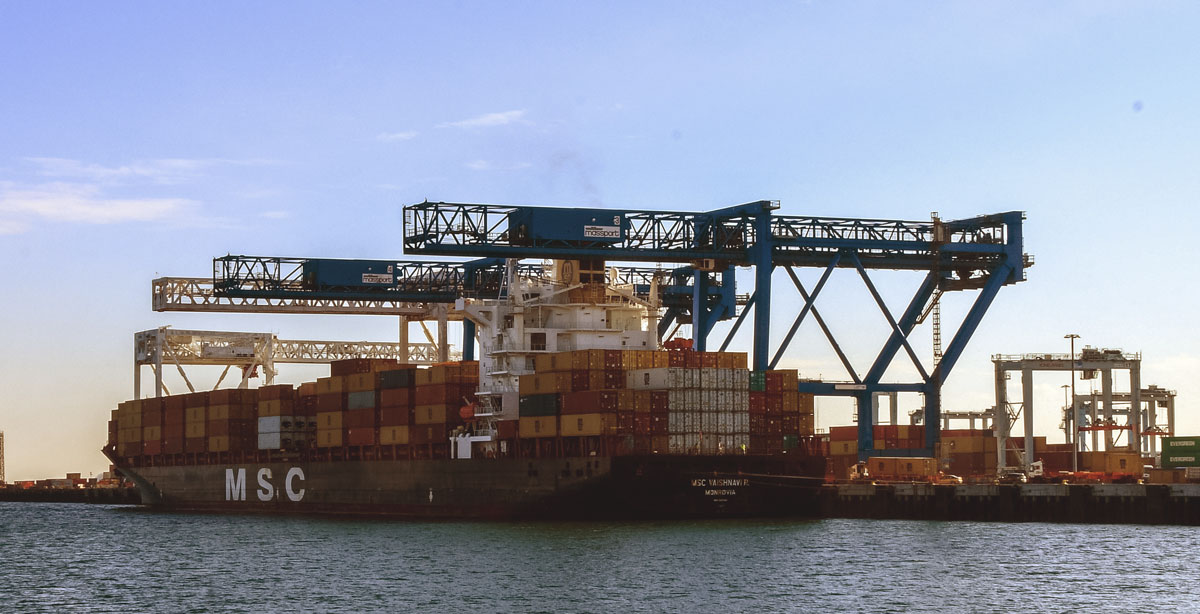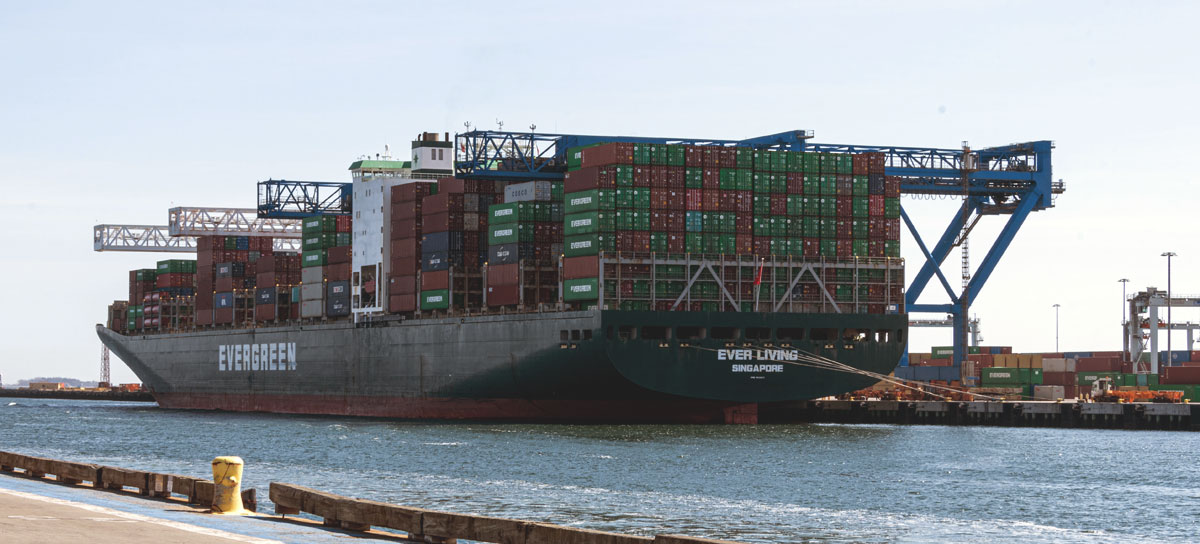Port of Boston readies to welcome megacontainerships from SE Asia
With a trio of new neo-Panamax cranes on their way, a recently completed 50-foot-depth berth and a soon-to-be-finished deeper harbor, the Port of Boston is preparing to enhance its position as New England’s preferred global gateway with capabilities for adeptly accommodating megacontainerships from Southeast Asia and other key worldwide markets.
“The Port of Boston is putting the final pieces in place to be able to efficiently handle vessels with capacities of as many as 14,000 twenty-foot-equivalent units, to the great benefit of importers and exporters – and consumers – throughout New England,” Mike Meyran, port director of the Massachusetts Port Authority, told AJOT.
As more than $850 million in investments come online, with boosts from federal and state funding, New England’s only full-service container terminal is nearly big-ship ready.
Multiple enhancements, including the new Berth 10 with 50-foot alongside depth, are already completed at the port’s Conley Container Terminal, where the three neo-Panamax gantries, en route from China, are expected to be in operation this fall. The harbor deepening project is ahead of schedule, with its full completion anticipated next year. As these improvements near completion, Massport is grateful for Conley’s loyal customers.

Neo-Panamax cranes on their way
The three low-profile neo-Panamax cranes left the manufacturing facility of Shanghai Zhenhua Heavy Industries Co. Ltd., or ZPMC, in mid-April and are to arrive via vessel at the Port of Boston in June, with commissioning scheduled for September.
With lifting heights as high as 160 feet and able to reach across widths up to 22 containers, the new cranes are designed to capably work 14,000-TEU-capacity ships. They are to join six somewhat smaller ship-to-shore cranes already in place at Conley Terminal, New England’s only full-service facility for maritime commerce.
Last year’s completion of the 1,250-foot-long deepwater Berth 10 is the latest of several Conley Terminal improvements. Earlier, the terminal added four new rubber-tired gantries, or RTGs, for proficiently moving containers within the facility, and it has implemented an expanded system of racks for refrigerated containers. Also, backlands have expanded to 130 acres from 100 acres, while a $75 million dedicated truck roadway was established in 2017, furnishing a direct link with the Interstate highway system while taking trucks off neighborhood streets.
A renovated gate complex, including upgrades to the Tideworks Technology terminal operating system to accommodate future implementation of an appointment system for trucks, should further efficiencies in moves in and out of Conley Terminal. The terminal, which is virtually free of congestion, already offers typical truck turn times of 30 minutes while providing highly personalized customer service.

Harbor dredging ahead of schedule
Meanwhile, the $350 million endeavor to deepen and widen Boston Harbor is advancing toward 2022 completion by Great Lakes Dredge & Dock, the Dutra Group and local partner Cashman Dredging & Marine through a collaboration between the U.S. Army Corps of Engineers, the Commonwealth of Massachusetts and Massport.
The project, which got under way in 2017, is moving forward ahead of schedule on an around-the-clock basis, with its second phase completed early last December. That phase has brought outer harbor depths to 51 feet from 40 feet and those of inner channels serving Conley Terminal to 47 feet from 40 feet. Also, the harbor’s turning basin has been widened to 1,750 feet from 1,200 feet.
“A deeper harbor, along with new cranes and significant deepwater terminal improvements, enhances the Port of Boston’s ability to attract direct ocean carrier services from Southeast Asia, including Vietnam, and other crucial global markets,” said Meyran, who joined the Massport executive team as deputy port director for operations in 2007, following nearly a decade with Maersk Line and its Sealand and APM Terminals units. He was elevated to Massport’s port director from acting port director in late 2019.
The Port of Boston’s enhanced deep-draft capabilities facilitate its ability to accommodate super-sized containerships, including those transiting the recently expanded Panama Canal, as well as the Suez Canal.

Imports, exports going strong
Both import and export volumes are already robust at the Port of Boston, which, unlike many U.S. ports, enjoys a favorable trade balance between inbound and outbound activities.
The port’s imports are led by a wide range of consumer goods, from furniture to toys and games to wines and spirits, while exports include recycled fibers, pulp, logs and lumber and, of course, New England’s world-renowned frozen seafood. As the nation has grappled with the COVID-19 pandemic, shipments of personal protective equipment also have moved across Boston docks.
After six consecutive years of all-time-high cargo levels, the Port of Boston experienced a single-digit dip in TEUs handled in the past COVID-19-impacted fiscal year.
More than 2,500 businesses throughout New England count upon the Port of Boston as a critical supply chain link. The port provides an $8.2 billion annual boost to the region’s economy.
Weekly services currently calling at Conley Terminal include Mediterranean Shipping Co.’s direct link from North Europe, which offers connections with Latin America, the Mediterranean region and Southeast Asia, and sailings from North Asia by the Ocean Alliance, encompassing partners CMA CGM, COSCO Shipping, Evergreen Line and OOCL.
“With our extensive new infrastructure in place,” Meyran said, “the Port of Boston looks forward to being big-ship ready and bringing in even more services to the benefit of all we serve.”

